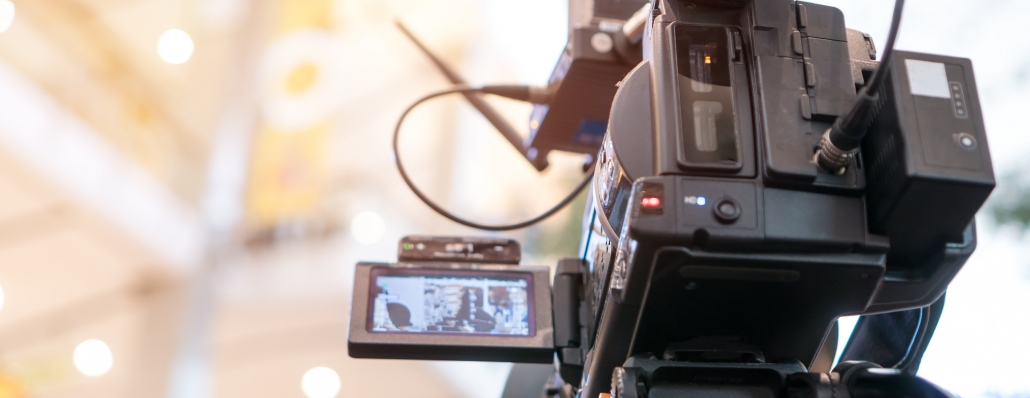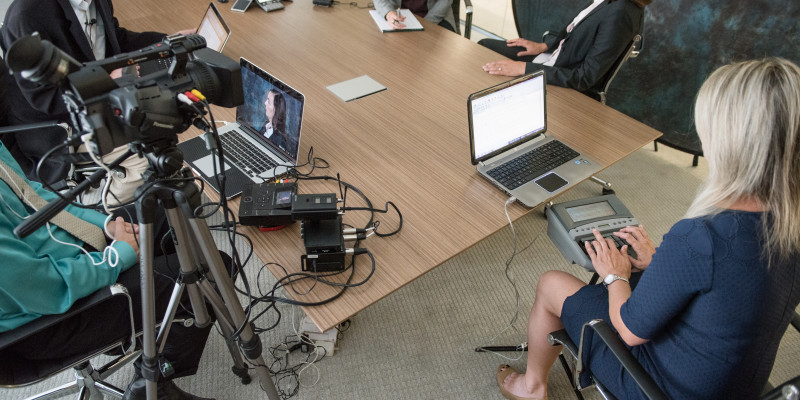Secret Benefits of Using Videography in Legal Situations
The combination of videography in legal cases offers a variety of strategic benefits that can significantly affect test end results. By improving proof discussion and boosting witness trustworthiness, videography functions as a powerful device to involve jurors and communicate complicated narratives properly. Furthermore, this tool protects critical testimonies, making sure that essential details is not lost to memory degeneration. As the legal landscape continues to evolve, the ramifications of leveraging videography in test settings value closer assessment, especially in recognizing how these advantages translate into substantial results in the courtroom.
Improved Proof Discussion
Boosted proof discussion with videography has changed the method legal cases are said and comprehended in the court room. By incorporating high-quality video recordings right into lawful process, lawyers can convey intricate information in an extra engaging and understandable manner - Legal Videography. Videography enables the visualization of proof, making it less complicated for discretionary to grasp the context and significance of the here and now truths
Along with improving clearness, videography can likewise catch real-time occasions, providing an authentic representation of occurrences pertinent to a case. This immediacy can substantially impact the persuasiveness of a disagreement, as aesthetic proof commonly resonates more highly than written paperwork. Video clip evidence can consist of essential aspects such as body language, tone of voice, and environmental factors, all of which contribute to an extra all natural understanding of the instance.
Using videography likewise permits effective organization of evidence, enabling attorneys to present their disagreements in a sensible and systematic way. By tactically incorporating video clip into their discussions, lawyers can facilitate an extra reliable evaluation of the evidence, inevitably causing informed decision-making by the court. The transformative power of videography in lawful contexts is both important and indisputable.
Improved Witness Credibility

Video proof can also alleviate possible biases that may occur from the witness's appearance or quirks in a live setting. By providing a well-produced video clip, lawful groups can make sure that the emphasis stays on the web content of the testimony as opposed to extraneous variables that could undermine reputation. The chance to evaluate documented statements can fortify witness uniformity, as disparities can be dealt with prior to trial, leading to even more dependable testimonies.
Moreover, the permanence of videography offers a secure versus memory decay or misconception in time. By having a clear, verifiable account of witness statements, legal practitioners can develop a more powerful case, enhancing the overall reliability of the witness and, subsequently, the integrity of the judicial process.
Engaging Jury Experience
Videography can considerably raise the court's involvement throughout lawful process. By integrating high-grade video clip discussions, legal groups can maintain the interest and capture of jurors, changing intricate info right into aesthetically compelling stories. This interaction is critical, as jurors usually struggle to soak up thick lawful terminology and elaborate details provided only via traditional means.
Video evidence allows this link jurors to witness occasions as they unfolded, providing context that composed testaments might do not have. Making use of vibrant visuals can stimulate psychological feedbacks, making the case much more relatable and memorable. Security video footage or reenactments can illustrate key minutes, making it possible for jurors to picture the evidence in a compelling fashion.
In addition, videography can assist in an extra interactive experience. Jurors can see and listen to witnesses, which adds a layer of authenticity and immediacy that created records can not duplicate. This multi-sensory strategy cultivates much deeper comprehension and retention of the provided product.

Efficient Situation Narration
A compelling story is essential for reliable case narration in the court room. Videography functions as a powerful tool to craft and provide this narrative, engaging the jury and boosting their understanding of the situation. By visually showing the occasions causing the legal conflict, videography allows lawyers to show complex situations in a relatable and clear way. This narration approach can evoke psychological reactions and foster empathy, producing a much deeper connection between the jury and the case.
Incorporating aspects such as witness animations, restorations, and meetings, videography provides a multi-dimensional viewpoint that typical methods can not accomplish - Legal Videography. This aesthetic representation not only help in clarifying truths however also helps jurors maintain crucial details. The dynamic nature of video clip can damage down obstacles of understanding, making intricate details much more accessible.
Eventually, efficient situation narration with videography changes the court room experience, allowing lawyers to click here for more info offer their disagreements in a compelling and persuasive manner. By taking advantage of the power of visuals, lawyers can substantially boost their capacity to connect necessary stories and attain desirable results for their customers.
Preservation of Testimonies
Maintaining testaments is a critical element of legal procedures, as the precision and integrity of witness declarations can dramatically impact the end result of an instance. Videography acts as an efficient tool in this respect, ensuring that testaments are videotaped in their original context, therefore minimizing the risk of misconception or distortion in time.
By capturing spoken and non-verbal cues, videography gives a comprehensive account of witness declarations, which can be very useful throughout test procedures. This technique not only records the web content of the testimony but likewise preserves the temperament and psychological responses of witnesses, supplying juries a richer understanding of the statement's credibility and relevance.
Moreover, making use of videography helps with an extra reputable evaluation of testaments throughout pre-trial preparations or post-trial evaluations. Lawyers can revisit taped statements to make clear details, evaluate incongruities, or establish approaches for cross-examination.
In significance, videography improves the conservation of testimonies, cultivating a transparent legal procedure that can bring about more fair end results. By safeguarding the stability of witness declarations, legal specialists can much better support for their clients and maintain the concepts of justice.

Verdict
Finally, the assimilation of videography in lawful situations substantially enhances the presentation of proof, bolsters witness integrity, and captivates juries with involving visual material. This medium helps with effective narration, permitting attorneys to share narratives that resonate deeply with decision-makers. In addition, videography functions as a long-term record of statements, lowering the threat of memory decay. Collectively, these benefits emphasize the essential role of videography in modern legal methods, ultimately adding to more enlightened judicial outcomes.
The combination of videography view it in legal cases presents a range of strategic benefits that can considerably influence trial end results.Boosted proof presentation through videography has revolutionized the means legal situations are argued and understood in the court room.Videography can dramatically boost the jury's engagement throughout legal proceedings. By aesthetically showing the occasions leading to the lawful dispute, videography allows lawyers to show complex circumstances in a relatable and clear way.In conclusion, the assimilation of videography in lawful cases considerably enhances the presentation of evidence, strengthens witness reputation, and mesmerizes juries via engaging visual web content.
Comments on “Legal Videography: A Comprehensive Guide to Recording Depositions”